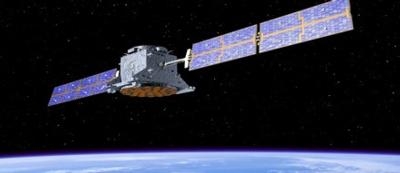Sat, Nov 10, 2018
Looking Into Migration Of The Command And Control System For Over 20 Spacecraft
Kratos Defense & Security Solutions has successfully completed the third phase of a pathfinder study for migrating the Command and Control System – Consolidated (CCS-C) ground system to the Enterprise Ground Services (EGS) architecture. CCS-C currently operates a fleet of over 20 Military Satellite Communications (MILSATCOM) satellites in four different constellations.

In phase 3, Kratos demonstrated the automated deployment of the MILSATCOM EGS (MEGS), using virtualized applications on the Space and Missile Systems Center (SMC)-provided Cooperative Research and Development Agreement (CRADA) Supply Chain Risk Management (SCRM) infrastructure hosted at the Space Management Battle Lab (SMBL). After successful deployment, the team demonstrated Kratos’ web-based user interface and automation capabilities. Traditionally, ground system capabilities take months or even years to deploy and test, however, with automated software deployment and dynamic allocation of resources employed by the Kratos team based on the EGS principles of deploying in a modern IT environment, the demonstration took less than ten minutes. This dynamic allocation of ground resources demonstrates the portability, resiliency and elasticity of the MEGS.
EGS is a critical enabling technology for the Air Force’s Space Enterprise Vision (SEV) focused on a sustainable, resilient space architecture that can respond to emerging threats and protect space-based assets. When implemented, EGS will result in a best of breed, service-based ground architecture for all Air Force spacecraft that will enable Air Force Space Command (AFSPC) to fight and win a war that extends into space. AFSPC is implementing EGS with prototyping activities to mature the concepts, technologies, EGS standards, and transition paths for legacy and future ground systems.
The Kratos study for MILSATCOM is a 27-month effort that consists of four phases and is an essential step in the evolution of CCS-C to exploit the benefits of EGS. Phase 3 concluded on 12 July with a successful demonstration. Phase 4 will be completed in December, 2018.
"This demonstration of phase three illustrates the capability of an EGS environment to be both resilient and elastic," said Larry Lind, Vice President, Kratos Federal Solutions Group. "Kratos’ involvement with EGS goes beyond the CCS-C/EGS interoperability study as we are actively involved in defining and refining the standards that will make EGS a reality.”
(Image provided with Kratos news release)
More News
Sikorsky UH-60 Black Hawk Helicopter Collided With An Unregistered DJI Mavic 3T Unmanned Aerial Vehicle On July 7, 2025, about 1557 central daylight time, an unregistered Sikorsky >[...]
“After considering the measures taken, minimum liquidity covenants in the Company's current debt obligations and cash flows to maintain current operational obligations requir>[...]
Ground Clutter A pattern produced on the radar scope by ground returns which may degrade other radar returns in the affected area. The effect of ground clutter is minimized by the >[...]
Aero Linx: Warbirds of America The EAA Warbirds of America, a division of the Experimental Aircraft Association in Oshkosh, Wisconsin, is a family of owners, pilots and enthusiasts>[...]
Also: Louisville UPS Crash Aftermath, Taiwan Boosts Pilot Pool, Spartan Acquires, DON’T MISS the MOSAIC Town Hall! This three-day Affordable Flying Expo brings together indoo>[...]
 NTSB Prelim: Sikorsky UH60 Sikorsky UH-60
NTSB Prelim: Sikorsky UH60 Sikorsky UH-60 Aero-News: Quote of the Day (11.13.25)
Aero-News: Quote of the Day (11.13.25) ANN's Daily Aero-Term (11.13.25): Ground Clutter
ANN's Daily Aero-Term (11.13.25): Ground Clutter ANN's Daily Aero-Linx (11.13.25)
ANN's Daily Aero-Linx (11.13.25) Airborne 11.07.25: Affordable Expo Starts!, Duffy Worries, Isaacman!
Airborne 11.07.25: Affordable Expo Starts!, Duffy Worries, Isaacman!



